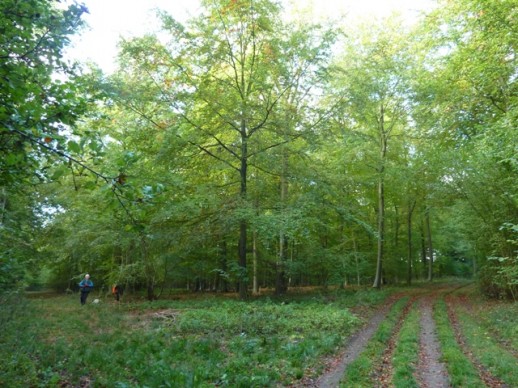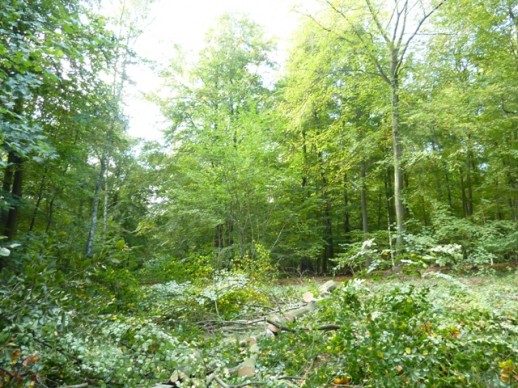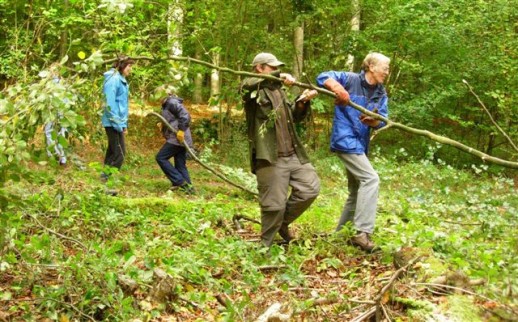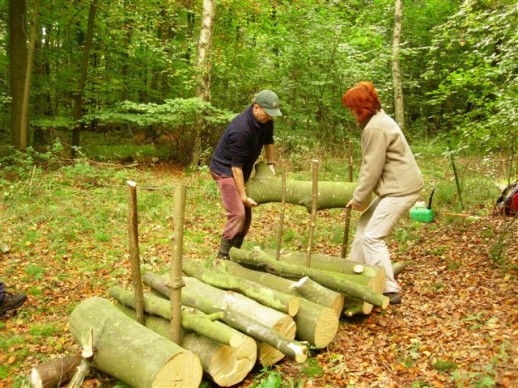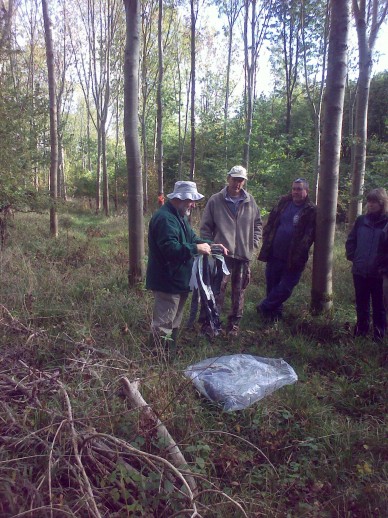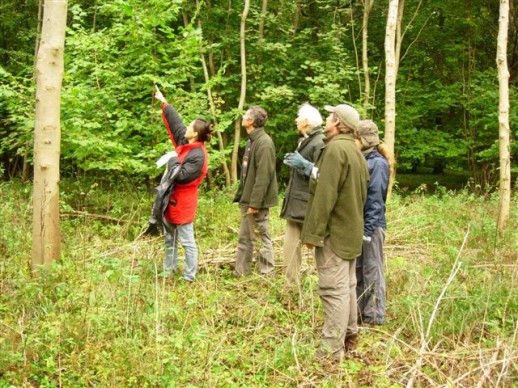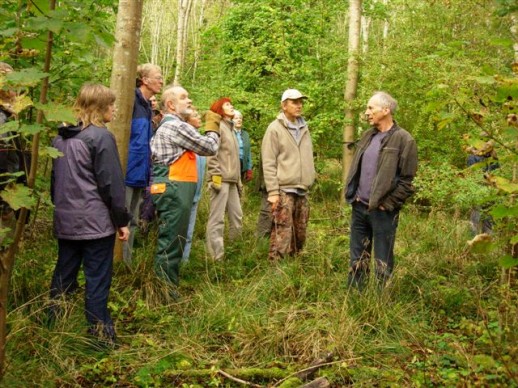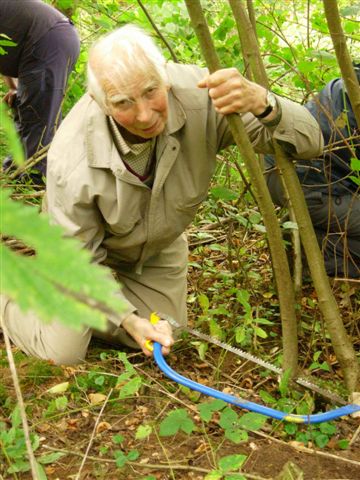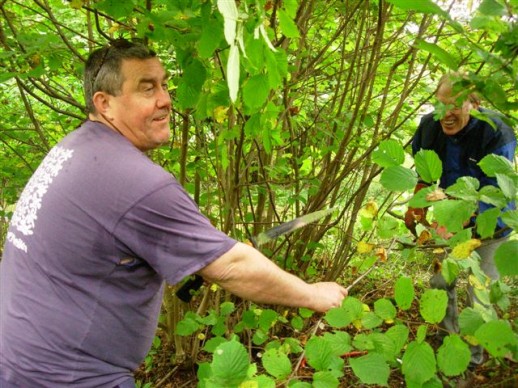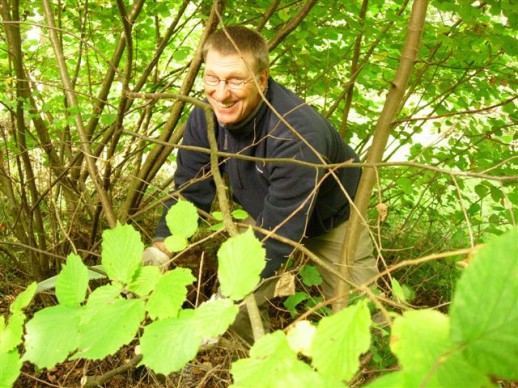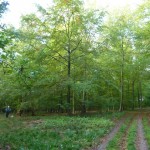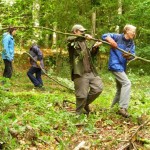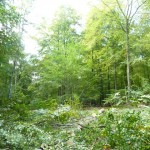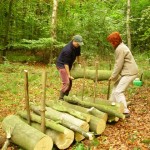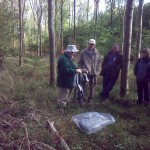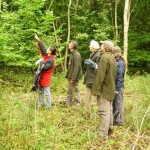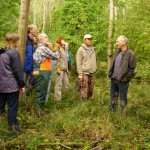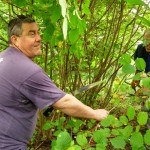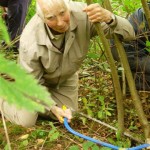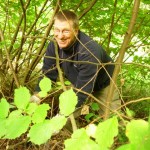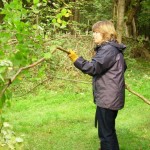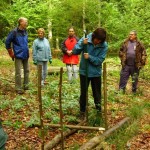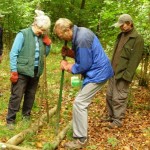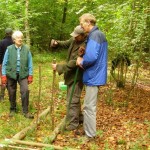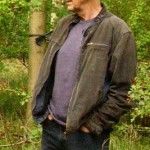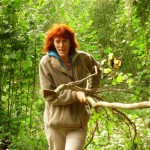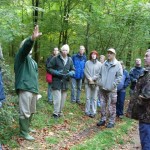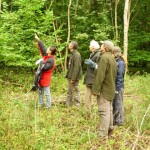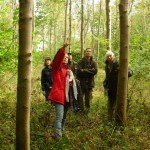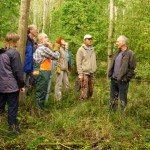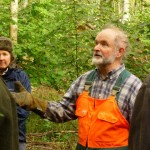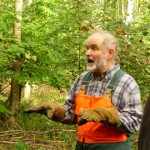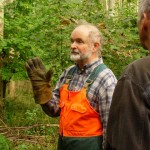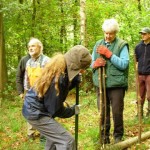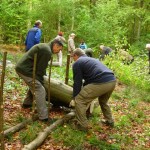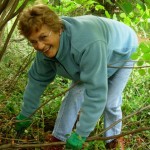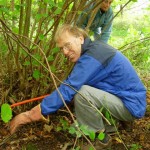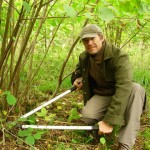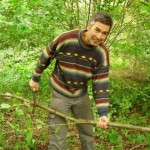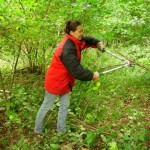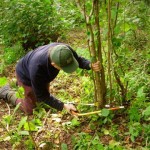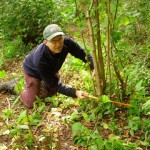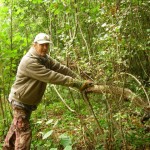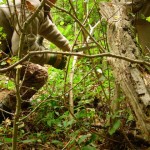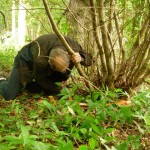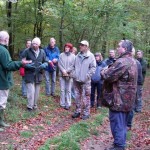Professor Julian Evans very kindly hosted a SWOG meeting at his own wood in Hampshire on Saturday 16th October. As it was very much a ‘hands on’ day, about sixteen members duly turned up, suitably attired and hand tools at the ready!
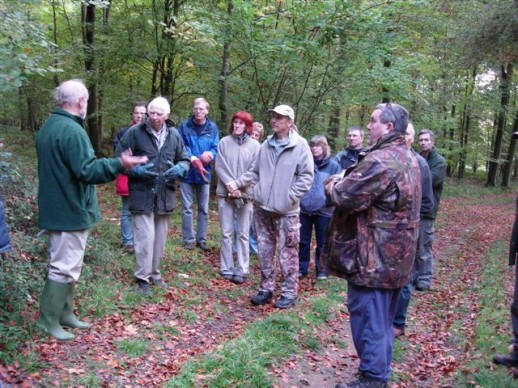
The day was split into three activities all of which with the general theme of opening up the canopy to allow light in.
Woodland Glades
Firstly we looked at an intersection of two rides. Already it had a shrub layer of privet, hazel and other species, but it was very much overshadowed by the large beech trees to the south of the main ride.
Julian brought the beech tree down, letting the light flood in.
Of course it all had to be cleared up!
And stacked!
Creating a glade like this is not just good good for wildlife as it allows more light and warmth to penetrate the canopy, but it also provides a great place to camp or have picnics!
Thinning
Our next task was to assess an area of ash, oak and cherry and decide which trees to keep and which to thin. We discovered this to be more difficult than expected and really dependant on what the objectives are. Here Julian wanted to enhance the habitat for wildlife, but also keep in mind a good timber crop in years to come.
We tied black bin bags around the trees we thought should be thinned, and white bags around the ones to keep, giving them more room to grow and develop. The idea being to mark about 8 out of the 49 trees in the stand to keep and 8 to bring down, the others would be decided on at later thinnings.
There was much ‘head scratching’ and discussion!
Eventually we made our choices and presented our findings to the Professor!
Some he was in agreement with, but others he produced counter arguments against, explaining that sometimes, there really is no ‘right’ decision! Even the Professor with years of experience put off a decision on a couple of trees until the next thinning, which may take place in another 5 or so years.
Hazel Coppicing
Our final task was to coppice some hazel stools. This should be done about every 6-10 years depending on the speed of growth and what it is to be used for. Leave it much longer than that and it will become ‘overstood’ and difficult to cut as it entangles itself. Much of our hazel coppice over the past half centuary or so has been left unmanaged like this . The demand for traditional coppice products like hurdles and beansticks has been taken by cheaper imports and ubiquitous ‘cheap’ plastic products.
Cut close to the ground, for straighter regrowth.
Smiles all round! Maybe the Professor wasn’t working us hard enough?
John – In the ‘thick of it’!
The day was not only very enjoyable and a chance to mingle with fellow woodlanders, but it proved to be an excellent piece of experiential learning. One of the main bits of feedback I received from the group was how much better it was to ‘do’ and ‘see’ the effects of our actions immediately, far better than learning from a book or just being told.
So many thanks once again to Professor Julian Evans, his wife Margaret and of course to all the attendees who made the day a great success.
More pictures from the day, click to see at full size.
